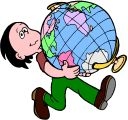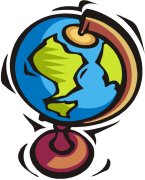
Worksheets and No Prep Teaching Resources
Reading Comprehension Worksheets
Geography

Geography
 Worksheets and No Prep Teaching Resources Reading Comprehension Worksheets Geography |
 Geography |
| edHelper's suggested reading level: | grade 3 | |
| Flesch-Kincaid grade level: | 4.62 |
| Print The World in Your Hands (font options, pick words for additional puzzles, and more) |
| Quickly print reading comprehension |
| Print a proofreading activity |
|
The World in Your Hands
By Trista L. Pollard |

|
 1 You see it every day. It sits on the shelf or by the window in your classroom. Do you ever wonder why it's there? Well, the globe in your classroom lets you see our world more closely. It allows you to have our world in your hands.
1 You see it every day. It sits on the shelf or by the window in your classroom. Do you ever wonder why it's there? Well, the globe in your classroom lets you see our world more closely. It allows you to have our world in your hands. |
Create Weekly Reading Books
Prepare for an entire week at once! |
| Leave your feedback on The World in Your Hands (use this link if you found an error in the story) |
 |
Geography
|